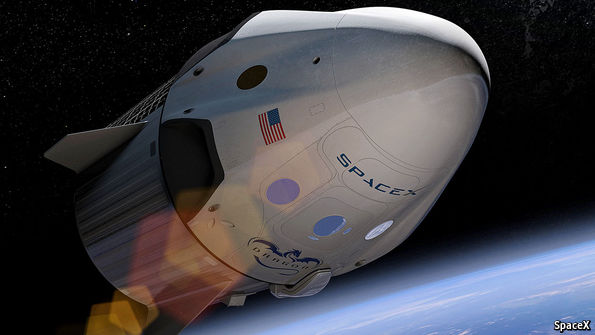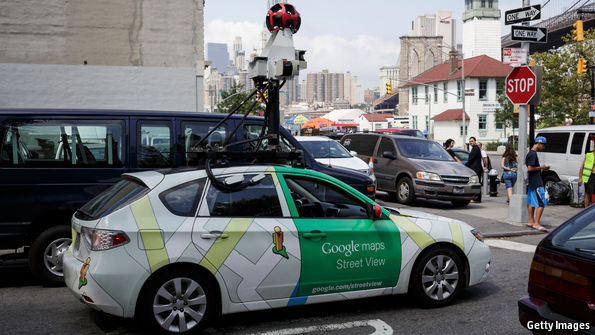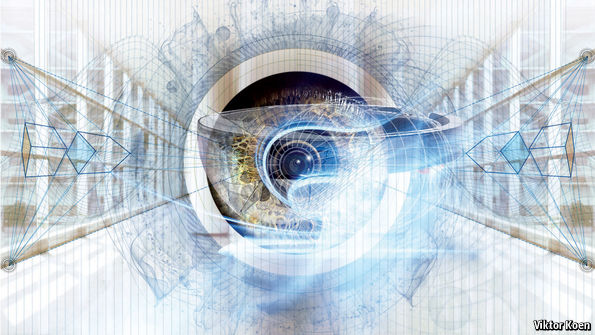Lunar spaceflight
Two races to the Moon are hotting up
from The Economist

Five teams are now competing to land robots on the Moon by the end of this year and win the $30m Google Lunar XPRIZE
On Feb Elon Musk said SpaceX had agreed to send two customers around the Moon in 2018. NASA is considering something similar with astronauts
It’s not like ‘private sector v public’: 1) SpaceX can offer such a trip thanks to NASA’s previous largesse; 2) NASA might pay SpaceX again
SpaceX’s rocket is far cheaper than NASA’s. But NASA has a big support in the Senate, & some in Washington distrust capricious billionaires
Mr Trump has yet to appoint a NASA administrator. But his speech to Congress hinted his ambition to leave footprints on the Moon by 2026
China sent a rover to the Moon in 2013 & plans to return rocks to Earth this year. There are other races to land people on the Moon by 2030
It would be wise to expect delays. It’s a tall order for SpaceX to send a crew-carrying reusable aircraft around the Moon by the end of 2018
Purchasers of the trip might be Steve Jurvetson, a venture capitalist on SpaceX’s board, & James Cameron who must spectacularly document it
| 2017/03/13
| Science & Technology, Summary
|
Neighbourhood watch
A machine-learning census of America’s cities
from The Economist

In 1686, Louis XIV came up with an idea to take a census and count France’s resources to control its towns and nobles better
Such surveys are expensive. But a team in Stanford came up with a cheaper, quicker method by using ML algorithms & data collected by Google
Using data from automotive websites, they trained ML algorithms which spotted 22m different cars on 50m images from Google Street View
Correlating the cars with data from traditional census, ML algorithm predicts education levels or political leanings from cars in an area
– The more detailed predictions are the less certain they become. As predictions rely on traditional surveys, it’s unlikely to replace them
+ The ML system is much cheaper and faster. It crunches through 50m images in two weeks. A human would take 15 years to do the same
+ Self-driving cars or Earth-imaging satellites produce even bigger data sets. This ML system could soon become a constantly updated one
| 2017/03/12
| Science & Technology, Summary
|
Reproductive technologies
Gene editing, clones and the science of making babies
from The Economist

20 yrs ago, Dolly the sheep triggered much fuss about nothing. Now, technological advances are making cloning humans more feasible
Some fear of people’s control over reproduction. Others argue for the right to alleviate suffering from childlessness or genetic diseases
Last year, new reproductive practice was added: mitochondrial transplantation / three-parent children
They bring the possibility of choosing which embryo will live or die, which can seem disgusting. But disgust is not a good guide to policy
Disgust often goes along with dystopian alarm. Reproductive science’s progress is so fast that people worry about the outcome
Mitochondrial transplants are intended to avoid dangerous diseases and will be familiar like other reproductive practices e.g. IVF and AID
Researchers should not be allowed to experiment on human fetuses, test within the law’s bounds and value people’s happiness and health
Growing sperm and eggs from body cells allows gay couples to have children but should be banned for one parent because of the child’s health
Gene editing will eliminate genetic diseases. But breeding babies with new traits and cloning other people raises questions
Should bereaved parents be able to clone a lost child? Should the wealthy be able to pay for their children to be intelligent and diligent?
Opinions change as people get used to. We need to protect the interests of the unborn. The risk is to hold back and leave people to suffer
| 2017/02/21
| Science & Technology, Summary
|
Reality, only better
The promise of augmented reality
from The Economist

SF predicts the future and influences the technologists. Mobile phones are real-life versions of the hand-held communicators in “Star Trek”
If companies like Microsoft, Google, Magic Leap and Meta have their way, the next thing to leap from fiction to fact will be AR
AR will take three-quarters of the $108 billion a year which Digi-Capital predicts will be spent by 2021 on VR and AR combined
Now, as computers have shrunk and become powerful enough, it has become possible to give people the same experience as their daily lives
Last year, the world was briefly entranced by an AR smartphone game called Pokémon Go. Apps such as Snapchat are another example.
Google’s Translate app employs automatic translation and a smartphone’s camera to show an image with text interpreted into other languages
Snapchat and Translate rely on machine-vision algorithms. Snapchat is designed to detect faces. Translate looks for text in the world
Google and Lenovo unveiled a Tango-enabled phone which can model a house, an office or any other space upon which it can draw things
An app for Tango, “Measure”, overlays a virtual tape measure on a phone’s screen. “Woorld” lets users fill their rooms with virtual objects
Tango is impressive but is still in its early stages. AR may not take off until smartphones can be abandoned in favour of smart spectacles
Such glasses do exist. So far, though, they have made a bigger impact on the workplace than in the home
Boeing is using AR glasses to give workers in its factories step-by-step instructions. The result is faster work with fewer mistakes
Google’s “Glass” did not go well. The idea of it was to create a wearable smartphone, all the while leaving his hands free for other tasks
Google stopped making Glass in 2015 on privacy grounds, although it is working on a new version aimed at businesses instead of individuals.
RideOn, an Israeli company, will start selling AR ski goggles which turn skiing into a video game by showing users routes
Unlike Google’s Glass, Microsoft’s HoloLens can draw 3D images that appear to exist in the real world
It is like a Tango-enabled smartphone whose cameras scan the world around it and generate such a flood of information
Unlike VR headsets, HoloLens is a self-contained computer that needs no accessories
By overlaying its images onto the real world, the HoloLens headset turns reality into a computer monitor
The first demonstrations of the HoloLens involved games. More recent apps have focused on business and training like an anatomy practice
HoloLens can be used collaboratively, as well. A guide can see what the HoloLens user sees and put circles around objects of interest
Aecom is already using the HoloLens to help design very complicated modern buildings
In 2016 Aecom designed buildings with complex roofs which they couldn’t check on a 2D screen. But HoloLens let them all review it together
The HoloLens is far from perfect. It is bulky, unfashionable and expensive. The view is too small, and the gesture-tracking system is clunky
One rival of Microsoft is Meta whose AR headsets will have a much wider field of view and recognize more hand gestures than HoloLens
Magic Leap has attracted $1.4 billion in investment from Google and Ali Baba. The demos it has released show images clearer than HoloLens
AR is still at an early stage, especially as a consumer technology. Market forecasts of AR might be too exaggerated as well as ones of VR
Even among techies, enthusiasm for VR seems limited. A survey by Steam found that just 0.38% of its customers owned a VR headset in December
Consumer versions of AR should be adapted for peoples’ phones. But a phone’s screen is small, fiddly and tedious to use for AR apps
Mark Zuckerberg thinks VR and AR headsets will be like normal-looking glasses. Samsung and Apple are exploring the idea of AR contact lenses
None of the present approaches to AR seems to change the world as iPhone did. But those behind them hope that a combination of them will
| 2017/02/12
| Science & Technology, Summary
|
Augmented reality
Why augmented reality will be big in business first
from The Economist

THE history of computers is one of increasing intimacy from mainframe machines to smartphones
The next step is to build a pair of “smart glasses”. AR could bring about a new and more intimate way to interact with machines
For the time being, the most popular AR apps are still found on smartphones. Pokémon Go and Snapchat are using the technology
Microsoft is already running trials of its HoloLens headset in medical schools and architectural practices
AR’s the first problem is aesthetic. The HoloLens’ alien appearance makes its wearers look more creepy than cool
The other problem is consent. In 2013 Google launched its “Glass” headsets. But plenty were worrying that users were covertly filming
Both of these problems are solvable. It may well be possible to build a pair of fashionable AR glasses. Social etiquette also evolves
AR seems likely to follow the same path to popularity as smartphones. The first mobile phones were brick-sized and a target of mockery
| 2017/02/10
| Science & Technology, Summary
|






